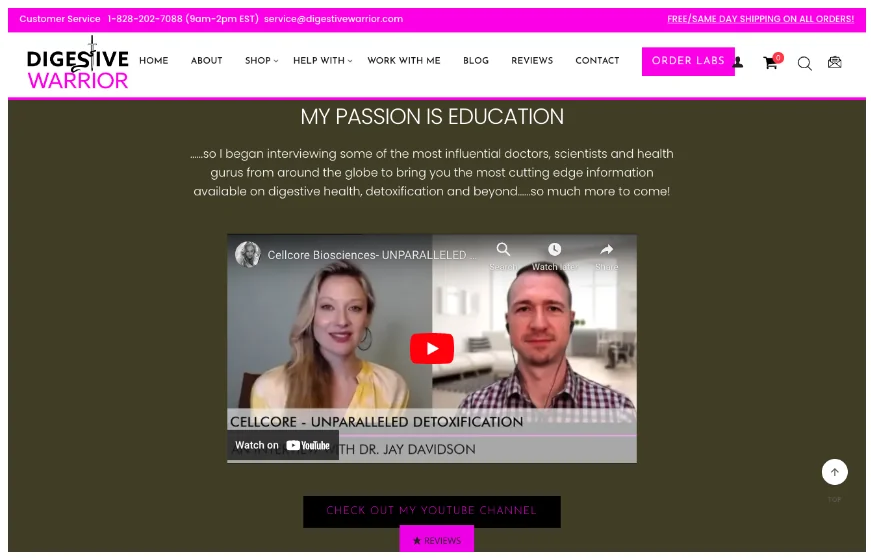Social Proof Your Brand: How to Stay Fresh, Reliable, and Relevant
Research continually shows that the B2B buying journey is complex and lengthy. According to The B2B Future Shopper Report 2023, it’s also highly frustrating for 46% of global B2B buyers — especially when conducting purchases online.
With this in mind, it doesn’t come as a surprise that seven out of ten B2B buyers rely on social proof during the consideration stage of the buyer’s journey and that 94% have used online reviews to evaluate potential solutions. But chances are, your business already uses social proof to attract and convert new customers. So, the question isn’t whether you should include trust-building elements on your web pages to boost conversions. Instead, it’s how to stay fresh, reliable, and relevant in the era of (almost) unlimited choices.
Here are the best tips for how to social-proof your brand in 2023 and beyond.
Understand What Info B2B Buyers Look for When Evaluating Solutions
One of the essential prerequisites of using social proof to the maximum of its potential is understanding what kind of information B2B buyers look for when evaluating products and services.
According to the 2023 State of B2B Software Reviews report:
- 68% of professional consumers want to know about product quality;
- 62% are interested in learning about a solution’s ease of use;
- 53% prioritize cost-effectiveness; and
- 53% want to invest in solutions that offer the highest level of security.
Additionally, B2B buyers care about customer support, integration capabilities, implementation time and ease, reporting and analytics, and ROI.
Considering this data, it’s easy to see what kinds of social proof you should highlight on your website to present visitors with reliable and relevant information. When sharing testimonials and customer feedback, prioritize examples that address the factors mentioned above and try to show off a breadth of information regarding the varied benefits of your offer.
One of the best ways to do this is to utilize social proof that addresses super-specific product/solution benefits.
For example, if you look at the Aura homepage, you’ll notice that the brand chooses what reviews to highlight based on the outcomes mentioned in the customer feedback. Each of the testimonials mentions either a percentage increase in sales, an improvement in ROI, or even specific AI strategies offered through the software’s capabilities.
This approach can also be seen in SurveySensum and various other Qualtrics alternatives, which emphasize customer success stories to showcase their effectiveness and distinct features.
Learn Whom Your Audience Trusts
The second key to earning your target audience’s trust is knowing what sources they will consult during their buyer’s journey to evaluate your solution’s fit for their needs.
Research from G2 shows that there are five influential and trustworthy channels 84% of software buyers consult before deciding what product to invest in. These include industry experts, colleagues, professional networks, online reviews, and other internal influencers. So, if you want to ensure that your brand’s social proof is fresh, reliable, and relevant, do your best to feature these voices and formats when working to gain new prospects’ trust.
There are a few excellent ways to accomplish this without having to completely overhaul your branding strategy,
Let Traditional Social Proof Steal the Limelight
One of the easiest ways to get more out of the reviews you show off on your site is to position them in the right section of your landing pages.
When doing this, you can employ as much creativity as you wish. However, to ensure that web visitors instantly notice elements testifying to your brand’s credibility, try to position trust-building elements in highly visible places.
For instance, knowing that web users spend 57% of their browsing time looking at the first screenful of a page, the ideal spot to show off reviews and ratings is in this area. This is what Dress Forms USA does with a Reviews flyout on its homepage. The flyout acts as an attention-grabbing and engaging element that perfectly supports the brand’s claim of being the #1 rated professional dress form used and trusted by the biggest names in fashion.
Give a Platform to Credible Voices
The second way to enhance the ability of social proof to position your business as the best choice in your industry is to feature voices your audience already trusts.
Seeing that B2B buyers consider industry experts to be highly trustworthy (and this is true for young B2C consumers as well), it’s not a bad idea to use your online presence as a platform for featuring credible industry voices in a way that will support your claims. This can be achieved through UGC or direct collaborations like interviews and webinars.
For a great example of how to do this, check out the Digestive Warrior homepage. You’ll see that the brand uses the My Passion Is Education section of the landing page to highlight interviews with influential doctors, scientists, and health influencers to present web visitors with the latest information on digestive health coming from sources seen as authorities in an otherwise low-trust industry.

An easier way to do this is to supplement featured testimonials with information about their author. For instance, the B2B brand Flock knows that its audience wants a team collaboration solution that works for a successful organization. That is why each review shown on the brand’s homepage includes the position and workplace of its author.
Know That Great Social Proof Can Come From Anywhere
Another important thing you should keep in mind when choosing social proof that will elevate your brand’s trustworthiness is that you don’t have to opt for traditional testimonial formats to show your target audience that they can rely on your business to solve their pain points.
Yes, reviews and ratings are a great way to start. However, more organic formats will automatically be more effective — especially as 81% of consumers worry about fake reviews.
With this in mind, explore alternative types of social proof to feature on your website.
For example, check out the Smash.vc homepage. You’ll see that the Who We Are section includes a screenshot of a conversation between the brand’s founder and David Heinemeier Hansson, an industry expert with almost half a million Twitter/X subscribers. What’s great about this uncommon approach to building trust is that it features an organic interaction — far more authentic than any customer review or testimonial the brand could have chosen to feature on its site.
User-generated content and case studies are also excellent social proof formats you can use in your online presence. Especially if you enrich them with real-world data regarding the results your solutions can deliver. After all, that’s what B2B buyers want to see in the first place.
Create Community-Driven Forms and Resources
Lastly, don’t underestimate the power of communities and professional networks.
In fact, some of the best examples of fresh and relevant social proof come from community-created resources and knowledge bases.
Check out Adobe’s Community page. The brand figured out that the best way to attract new professional users (and keep existing customers happy with its products) was to create a forum where creatives could seek help, exchange experiences, and find inspiration for everything they can do with their Adobe Photoshop subscription. While this type of resource may not be the traditional format of social proof most businesses consider using to build trust, it’s safe to say that the very existence of this community hugely contributes to the brand’s continuing success and popularity in its niche.
Understand B2B Consumer’s Priorities When Selecting Service Providers
Regardless of whether they’re professional users or end consumers, all buyers have one thing in common — they want to receive the best value for their money. But while B2C buyers may be willing to sacrifice quality, support, or convenience to save a few bucks, most B2B organizations can’t afford to do this — even though US companies waste more than $17 million on underutilized SaaS solutions every year.
So, understanding that your target audience needs to know if yours is the right solution for their needs, you must highlight social proof that addresses their most common concerns. That will be customer satisfaction ratings, cost, and industry certifications. There are several easy ways to do this.
Source Reviews and Ratings from Reliable Third-Party Sources
One of the most effective ways to keep your social proof relevant and reliable is to source it from platforms your target audience already sees as authoritative. Generally, these will include review sites like Trustpilot, G2, or Capterra. Embedding Google Reviews and ratings will do just as well.
If you look at the SomniFix homepage, you’ll see that this is precisely what the brand does to ensure its high ratings hold weight. The People Love Us section of the site features a great mix of third-party reviews and curated feedback, allowing the brand to effectively establish its credibility.
Utilize Relevant Trust Badges and Show Off Media Mentions From Industry-Leading Publications
Another great way to ensure your social proof is successful at convincing B2B leads to convert is to use it in a way that addresses their priorities.
For instance, if you know that your target audience cares about testing, certificates, or licenses, use trust badges to communicate these product qualities.
An excellent example of a business doing just this comes from TrelliX. The company points out that it has 40,000 customers, serving 86% of Fortune 100 finance companies and three out of four US Department of Defense agencies. But it goes a step further with its social proof by pointing out that it has won multiple awards and recognitions, including the Cyber Security Excellence Award for 2023.
Don’t Hide Negative Feedback
Finally, keep in mind that having the perfect rating isn’t the best way to win your target audience’s trust.
In fact, The Impact of Reviews on B2B Report from G2 (quoted toward the beginning of this guide) found that 67% of B2B buyers want to see a mix of positive and negative reviews when evaluating solutions. According to the resource, negative feedback helps provide insight into the products they’re considering investing in, making their buying decisions more straightforward and less likely to end in disappointment.
With this in mind, it’s essential that, in your trust-building strategy, you don’t attempt to conceal your solution’s shortcomings. Own all negative reviews, and don’t try deleting unflattering feedback. And, if you’re really committed to ensuring your B2B brand is the most trusted option in your industry, consider investing in user-oriented content that will help your prospects determine whether your solution is the right fit for their needs or if they’d be better off by searching elsewhere.
Final Thoughts
Highlighting (and fully utilizing) your brand’s social proof doesn’t have to be complicated.
Nonetheless, to ensure that the feedback you share about your solutions stays fresh, relevant, and reliable, it’s essential that you don’t fall into the trap of letting your customers do all the work for you.
Instead, do your best to proactively seek out and create new bits of content that will support your brand’s claims, address your audience’s pain points, and show the people you want to reach that they can trust your brand to always put its customers first.
